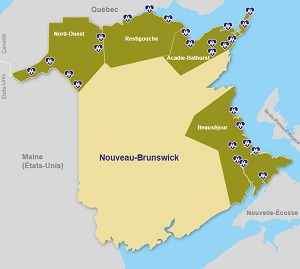Board Policy CA-300: Board of Directors Committees
Effective date: 2022-06-21
Policy
Role and designation
The committees of the Board of Directors (the “Board”) are mechanisms that allow more in-depth examination in the major governance areas and functions for which the Board is responsible. Their role is to support the Board in discharging its responsibilities. These administrative committees are not established to fulfill duties or responsibilities that are strictly within the purview of the leadership team or to advise the leadership team on its management activities.
The Board committees are established by the Board, which may modify them to meet its governance-related needs. The current standing committees of the Board include the:
- Executive Committee;
- Governance and Nomination Committee;
- Finance and Audit Committee;
- Quality of Care and Safety of Patient Committee;
- Strategic Research and Training Committee.
The Board also strikes a Professional Advisory Committee and Medical Advisory Committee in accordance with the Regional Health Authorities Act.
Application of the policy
This policy applies to any group created by a motion of the Board, regardless of whether the group is called a “committee” or not or whether it is solely made up of Board members or not. This policy does not, however, apply to committees created under the authority of the President and CEO.
Directives applicable to the Board committees with the exception of the Executive Committee
- The Board committees make recommendations to the Board within their terms of reference. The Board shall consider its committees’ recommendations, without being bound by same.
- The Board committees may not speak or act on behalf of the Board unless they have obtained formal authorization to do so.
- The Board committees exercise no authority over the Network’s staff. The CEO reports to the Board in its entirety and is not required to obtain approval from a Board committee before undertaking any action specified by the Board.
- Each committee shall review its terms of reference annually and submit them to the Governance and Nomination Committee to validate compliance.
- The Chairperson of the Board is an ex officio voting member of all Board standing committees. If the Chairperson cannot attend a meeting, the Vice-Chairperson could stand in.
- The CEO or delegate is a non-voting member of all the committees.
- A committee member may be removed or replaced by the Board at any time and ceases to be a committee member when he or she ceases to be a Board member.
- Committee membership and the frequency of meetings are set out in each committee's terms of reference.
- The chair of a committee or two members of a committee may request that a committee meeting be called.
- A committee member may attend meetings via various means, namely via telephone or electronic means or any other means of communication that allows all those attending to communicate among themselves satisfactorily. A member attending a committee meeting via such a means of communication is deemed to be present at the meeting.
- A majority of voting members constitutes a quorum. Motions are approved by majority vote.
- The Board Secretary prepares and distributes the minutes of each meeting to all committee members within a reasonable timeframe. The Board Secretary maintains a complete set of minutes, which must be available to all Board members and the President and CEO.
- A committee may invite to its meetings any member of the Board or, in consultation with the CEO, any employee of the Network or any consultant whom it is deemed advisable to invite for assistance with the committee's work.
-
Each committee reports to the Board at each Board meeting on specific recommendations as well as advice related to its terms of reference.
- The minutes of the committees are distributed to Board members for information purposes.
- The support documents used by committees are distributed to the Board only when needed to support a recommendation made to the Board.
- Each committee provides the Board with a written report on all its meetings, including its recommendations. This report will be discussed, as needed, and voted on at the public meeting.
- If circumstances call for it, some elements may be discussed in camera. If the in camera status is maintained, a specific report will be prepared for adoption in camera. The reason for the in camera status will be mentioned in the minutes of the in camera meeting and the topic will be omitted from the report on the public session.

